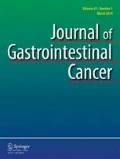Abstract
The genetic code has received a great amount of attention from investigators, and the media since its discovery, and then again with the sequencing of the human genome in 2000. A decade later, investigators are beginning to look beyond the raw sequence to other mechanisms that affect gene expression. The main function of the nucleus is to maintain the genome and regulate gene expression. Changes in the expression of genes can drastically change the properties of the cell therefore giving the nucleus a role as the cell's “command post.” In the past few years, one of the most notable discoveries in the study of the nucleus is that this organelle is not homogeneous. It is also not randomly organized; everything within the nucleus has a specific location with a specific function. Chromosome location within the nucleus relative to its center is directly related to transcription level. Additionally, there are specific regions of the nucleus where content and function differ. The various structures of the nucleus such as the membranes and matrix that supply support to the well protected chromatin offer ever increasing layers of complexity to the nucleus. Here, we focus on the nuclear matrix and its possible effects on signaling and cellular transformation leading to cancer.


Similar content being viewed by others
References
Alberts B. Molecular biology of the cell. 5th ed. New York: Garland Science; 2008.
Bridger JM, et al. The nuclear lamina. Both a structural framework and a platform for genome organization. FEBS J. 2007;274(6):1354–61.
Oberdoerffer P, Sinclair DA. The role of nuclear architecture in genomic instability and ageing. Nat Rev Mol Cell Biol. 2007;8(9):692–702.
Heard E, Bickmore W. The ins and outs of gene regulation and chromosome territory organisation. Curr Opin Cell Biol. 2007;19(3):311–6.
Shopland LS, et al. Folding and organization of a contiguous chromosome region according to the gene distribution pattern in primary genomic sequence. J Cell Biol. 2006;174(1):27–38.
Georgiev GP, et al. A. E. Braunstein Plenary Lecture. Nuclear skeleton, DNA domains and control of replication and transcription. Eur J Biochem. 1991;200(3):613–24.
Sengupta K, et al. Position of human chromosomes is conserved in mouse nuclei indicating a species-independent mechanism for maintaining genome organization. Chromosoma. 2008;117(5):499–509.
Fawcett D. An Atlas of fine structure: the cell, its organelles and inclusions. W.B. Saunders; 1966.
Lever E, Sheer D. The role of nuclear organization in cancer. J Pathol. 2010;220(2):114–25.
Stuurman N, Heins S, Aebi U. Nuclear lamins: their structure, assembly, and interactions. J Struct Biol. 1998;122(1–2):42–66.
Dechat T, et al. Nuclear lamins: major factors in the structural organization and function of the nucleus and chromatin. Genes Dev. 2008;22(7):832–53.
Stewart CL, et al. Mouse models of the laminopathies. Exp Cell Res. 2007;313(10):2144–56.
Boveri T. Concerning the origin of malignant tumours by Theodor Boveri. Translated and annotated by Henry Harris. J Cell Sci. 2008;121(1):1–84.
Coyne RS, Chalker DL, Yao MC. Genome downsizing during ciliate development: nuclear division of labor through chromosome restructuring. Annu Rev Genet. 1996;30:557–78.
Zink D, Fischer AH, Nickerson JA. Nuclear structure in cancer cells. Nat Rev Cancer. 2004;4(9):677–87.
Bernardi R, Papa A, Pandolfi PP. Regulation of apoptosis by PML and the PML-NBs. Oncogene. 2008;27(48):6299–312.
Willis ND, Wilson RG, Hutchison CJ. Lamin A: a putative colonic epithelial stem cell biomarker which identifies colorectal tumours with a more aggressive phenotype. Biochem Soc Trans. 2008;36(Pt 6):1350–3.
Debes JD, et al. p300 modulates nuclear morphology in prostate cancer. Cancer Res. 2005;65(3):708–12.
Cremer M, et al. Inheritance of gene density-related higher order chromatin arrangements in normal and tumor cell nuclei. J Cell Biol. 2003;162(5):809–20.
Marella NV, et al. Cell type specific chromosome territory organization in the interphase nucleus of normal and cancer cells. J Cell Physiol. 2009;221(1):130–8.
Hruban RH, et al. Pancreatic intraepithelial neoplasia: a new nomenclature and classification system for pancreatic duct lesions. Am J Surg Pathol. 2001;25(5):579–86.
Shmueli O, et al. GeneNote: whole genome expression profiles in normal human tissues. C R Biol. 2003;326(10–11):1067–72.
Khalid A. Differentiating neoplastic from benign lesions of the pancreas: translational techniques. Clin Gastroenterol Hepatol. 2009;7(11):S55–8.
Katoh Y, Katoh M. Hedgehog target genes: mechanisms of carcinogenesis induced by aberrant hedgehog signaling activation. Curr Mol Med. 2009;9(7):873–86.
Acknowledgment
We thank Dr. Martin E. Fernandez-Zapico for helpful comments. CRS received support from AHA (SDG 0630137 N), ACS Young Investigator Award, and Mayo Clinic Cancer Center.
Author information
Authors and Affiliations
Corresponding author
Rights and permissions
About this article
Cite this article
Rynearson, A.L., Sussman, C.R. Nuclear Structure, Organization, and Oncogenesis. J Gastrointest Canc 42, 112–117 (2011). https://doi.org/10.1007/s12029-011-9253-5
Published:
Issue Date:
DOI: https://doi.org/10.1007/s12029-011-9253-5




